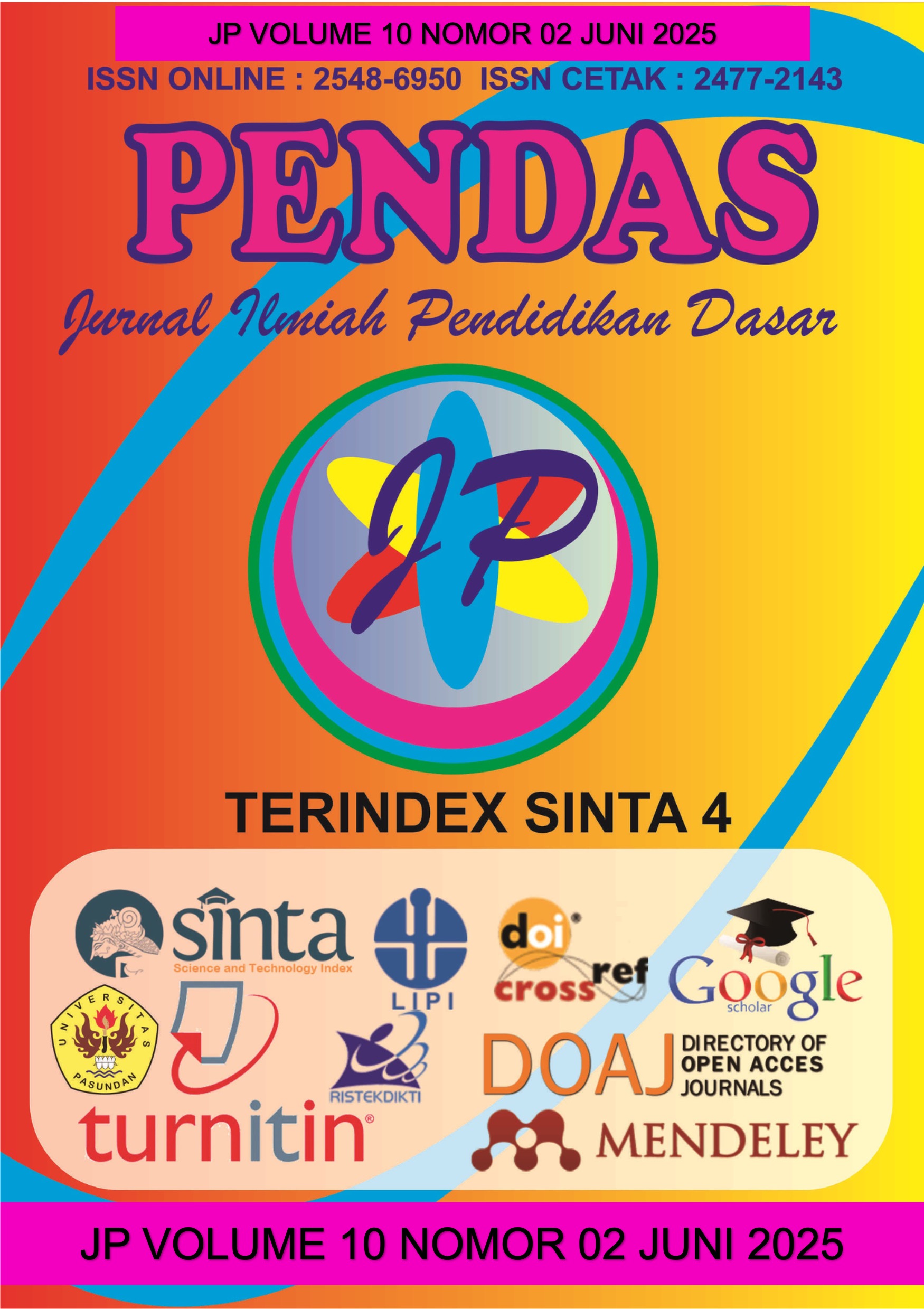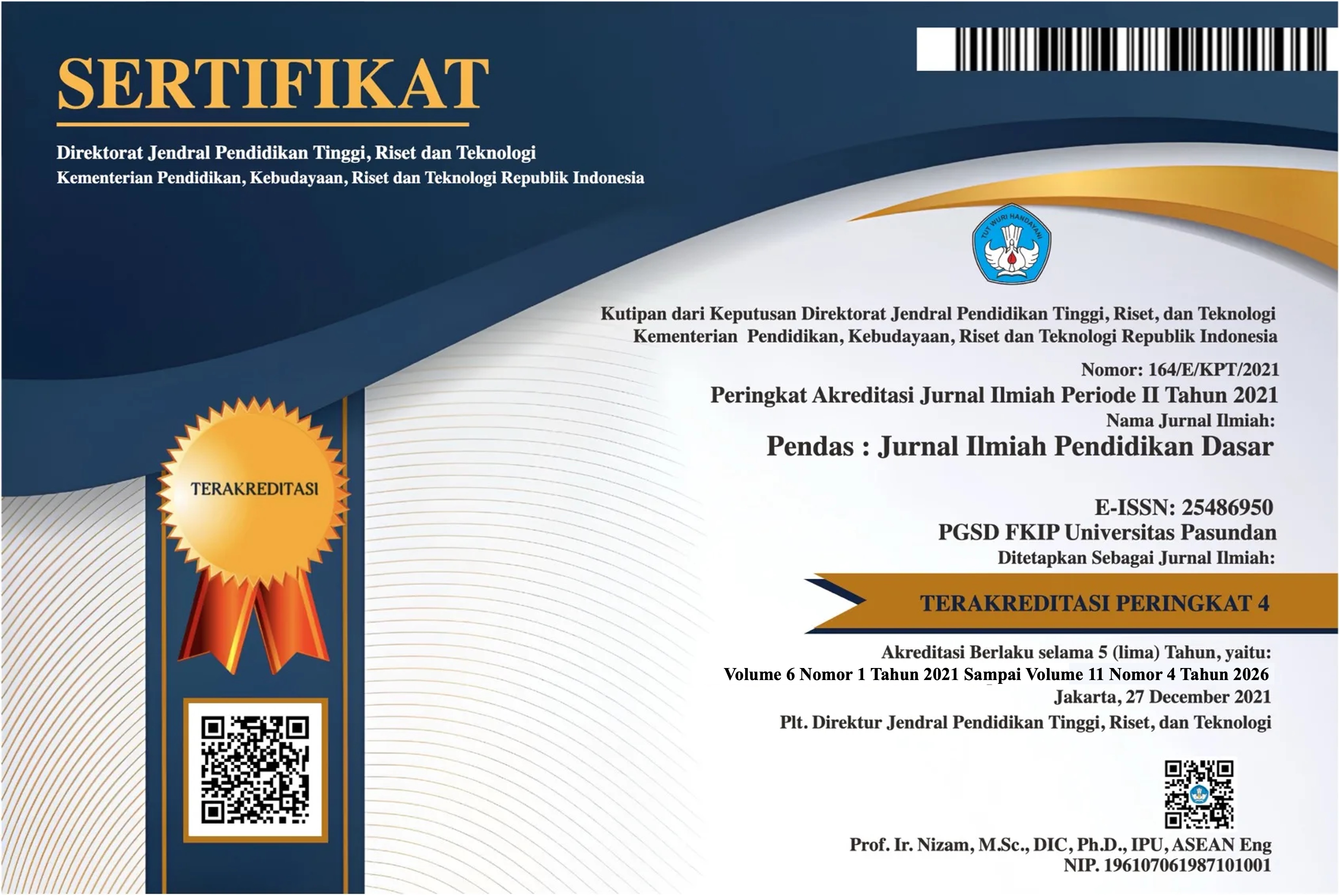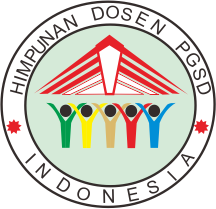PENERAPAN BAHAN AJAR NON CETAK PADA PEMBELAJARAN PAI DALAM MENINGKATKAN KREATIVITAS SISWA DI SMK PERSATUAN 2 TULANGAN SIDOARJO
DOI:
https://doi.org/10.23969/jp.v9i2.15262Keywords:
student creativity at school, Application of non-printed teaching materialsAbstract
Islamic Religious Education is one of the important lessons in the curriculum in Indonesia. To increase the creativity of PAI learning, in essence Islamic Religious Education is the key to building children's character as a guide for daily life. So that education can run effectively and efficiently, an interactive, inspiring and fun process is carried out, and provides opportunities for students to play an active role in learning and can generate students' interests, talents and creativity. Among the efforts to carry out educational units is to implement new ideas in learning and use appropriate non-printed teaching materials so that the efficiency and effectiveness of graduate competitions can increase. Non-printed teaching materials can provide an effective alternative. Part of the alternative in developing learning is the use of non-printed teaching materials. Non-printed teaching materials are learning tools that are not printed, generally in audio, audio-visual and electronic form such as ppt and video. This research aims to study the application of non-printed teaching materials in PAI learning in increasing student creativity at Perstuan 2 Vocational School Tulangan Sidoarjo. As an effort to increase student creativity at school, the approach in this research is a qualitative approach. Data collection techniques are carried out through observation. As a result of the discussion, creativity can be identified from the characteristics: 1. Students have high curiosity, 2. Open to new experiences, 3. Creative imagination, and the application of non-printed teaching materials in PAI learning are explained in three ways: First, planning. Second implementation. Third evaluation. Based on this discussion, it can be concluded that the application of non-printed jar materials can increase student creativity at the Unity 2 Tulangan Vocational School, Sidoarjo. Through the application of non-printed teaching materials, students have a very big desire and can change the dynamics of PAI classes positively. The application of non-printed jar materials is designed to provide students with more learning experiences that are interesting and relevant for PAI students.
Downloads
References
Ananda, R. (2019). Dr. Rusydi Ananda, M.Pd.
Ardiansyah, A. (2023). Pengembangan Bahan Ajar PAI Berbasis Model Mind Mapping pada Materi Sholat Berjamaah Kelas II di SDN 2 Keniten. Social Science Academic, 1(1), 201–212. https://doi.org/10.37680/ssa.v1i1.3363
El-Yunusi, M. Y. M., Jannah, R., Muzayyin, M. K., & Khan, A. L. (2023). Pemanfaatan Media Power Point Dalam Meningkatkan Motivasi Belajar Pai Peserta Didik Di Upt Sd Negeri 224 Gresik. Pendas : Jurnal Ilmiah Pendidikan Dasar, 8(1), 1457–1469. http://dx.doi.org/10.23969/jp.v8i1.8040%0Ahttps://journal.unpas.ac.id/index.php/pendas/article/download/8040/3046
Fajar, N. D. (2021). Pemanfaatan dan Pengembangan Bahan Ajar Non Cetak, Program Video, dan Bahan Ajar Berbantuan Komputer. Sindoro Cendikia Pendidikan, .1 no.12(12), 1–10. https://youtu.be/z3tyVDKaiQU
Magdalena, I., Sundari, T., Nurkamilah, S., Ayu Amalia, D., & Muhammadiyah Tangerang, U. (2020). Analisis Bahan Ajar. Jurnal Pendidikan Dan Ilmu Sosial, 2(2), 311–326. https://ejournal.stitpn.ac.id/index.php/nusantara
Nurfatimah, S. &. (2019). Implementasi Teori Belajar Konstruktivisme Dalam. Humanika, Kajian Ilmiah Mata Kuliah Umum, 19(September), 121–138.
Putri, A. R., Rahman, B. A., Insani, M. Y. S., & Mayar, F. (2021). Analisis Kreativitas Siswa Sekolah Dasar dalam Pembelajaran Seni Melalui Kegiatan Kolase pada Masa Pandemi. Jurnal Inovasi Pendidikan Dan Pembelajaran Sekolah Dasar, 5(1), 102. https://doi.org/10.24036/jippsd.v5i1.112928
Ridho, U. (2018). Evaluasi Dalam Pembelajaran Bahasa Arab. An Nabighoh Jurnal Pendidikan Dan Pembelajaran Bahasa Arab, 20(01), 19. https://doi.org/10.32332/an-nabighoh.v20i01.1124
Utami, N. D., Ningsih, N. N., & Wahyudi, M. (2022). Kreativitas Guru Pai Dalam Pengembangan Bahan Ajar Di Madrasah Aliyah Al-Amin Bandar Masilam. Jurnal At-Tabayyun, 5(1), 1–9. https://doi.org/10.62214/jat.v5i1.73
Yulia Syafrin, Muhiddinur Kamal, Arifmiboy, A. H. (2021). Pelaksanaan Pembelajaran Pendidikan Agama Islam dalam. 1(4), 448–460.
Zetriuslita, Z. (2016). Profil Sikap Ilmiah Rasa Ingin Tahu (Curiosity) Matematis Mahasiswa. Jurnal Ilmu Pendidikan (JIP) STKIP Kusuma Negara Jakarta, 8(1), 41–46.
Zultrianti, M., Supriatna, N., Disman, D., Gunawan, A., & Hendayani, S. (2023). Imajinasi Kreatif Dalam Kemampuan Berpikir Anak Sekolah Dasar, Penting Kah? Jurnal Elementaria Edukasia, 6(4), 1926–1936. https://doi.org/10.31949/jee.v6i4.7749
Downloads
Published
Issue
Section
License
Copyright (c) 2024 Pendas : Jurnal Ilmiah Pendidikan Dasar

This work is licensed under a Creative Commons Attribution 4.0 International License.



















